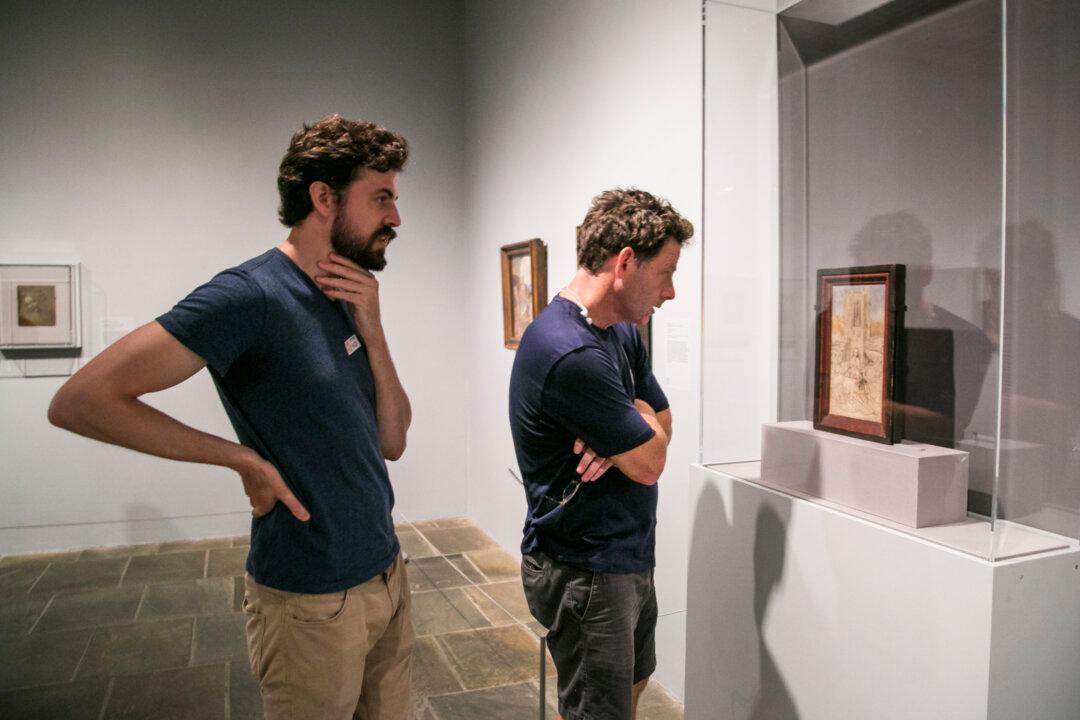NEW YORK—A realist painter encouraged me to see The Met Breuer exhibit, “Unfinished: Thoughts Left Visible.”
“It’s phenomenal! You have to see it,” I was surprised to hear him say.
Then he specified, the third floor is the must-see part of the exhibit. The fourth floor has some candy you could try—a dwindling, colorful pile left in a corner as a Felix Gonzalez-Torres installation.
The Met Breuer is the Metropolitan Museum’s annex for modern and contemporary art, on Madison Avenue—the former home of the Whitney Museum. It’s not necessarily the most inspiring, not the first-stop museum for the enclave of artists I’ve been interviewing, who have been trained in the atelier tradition of the old masters.

Artist Jacob Collins looks at "The Death of Bara" by Jacques Louis David at The Met Breuer in New York on July 15, 2016. Milene Fernandez/Epoch Times






